A decade ago, many designers were making chairs, couches and all manner of furniture using 3D printing. These were statement pieces. Star designers planting their 3D printed tree to showcase the coming new frontier. Subsequently, lesser-known figures started experimenting with generatively designed desks, bioinspired tables, algorithms that made lamps, and lots and lots of fractals. Fractal designs were everywhere. More mandelbrot than sense, people pressed ahead. Funnily enough, given the huge canvas of possibilities open to us, everything started to look the same. It was as if we were working on a collective collection of 3D-printed work. Thousands of designers the world over were diligently making things as if they were by one hand.
Many things were in polyamide (PA12) and sintered mostly produced through services. Other items were stereolithography and finished by hand. In a later period, people started to embrace the 3D printed esthetic. The powdery denim-like surface of sintered work or the visible stepped lines of SLA or FDM became hallmarks of contemporary thinking.
Then people turned to homemade material extrusion printers. The next step was to experiment with self-designed processes. Then, processes focused on cradle-to-cradle, design-to-rubbish-and-back were all the rage. New materials and novel concepts came subsequently. All in all, however, there have been precious few successful 3D printed furniture pieces.
In the rest of this post, we’ll get a short overview of some furniture pieces that have been made. We examine the limitations of 3D printing for furniture, some successful items, and look at why going forward, we will see more furniture pieces emerging.


One of my all time favorite pieces is Joris Laarman‘s Starling’s desk. A full-sized desk made with stereolithography it is based on algorithms derived from birds flying in a flock. It is impractical and incredibly inexpensive but a beautiful object all the same. Museum quality work that pushes the makable.
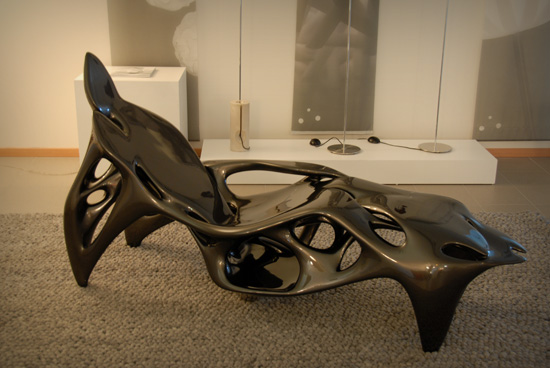
Another stereolithography object is the Materialise .MGX’s Root Chair by Kol Mac. This is a beautiful object but would be cost-prohibitive. Within the confines of existing processes, these designers tried to make a piece of furniture and ended up with things that were way beyond the price range of all but the wealthiest. Someone who did it differently was Dirk van der Kooij.
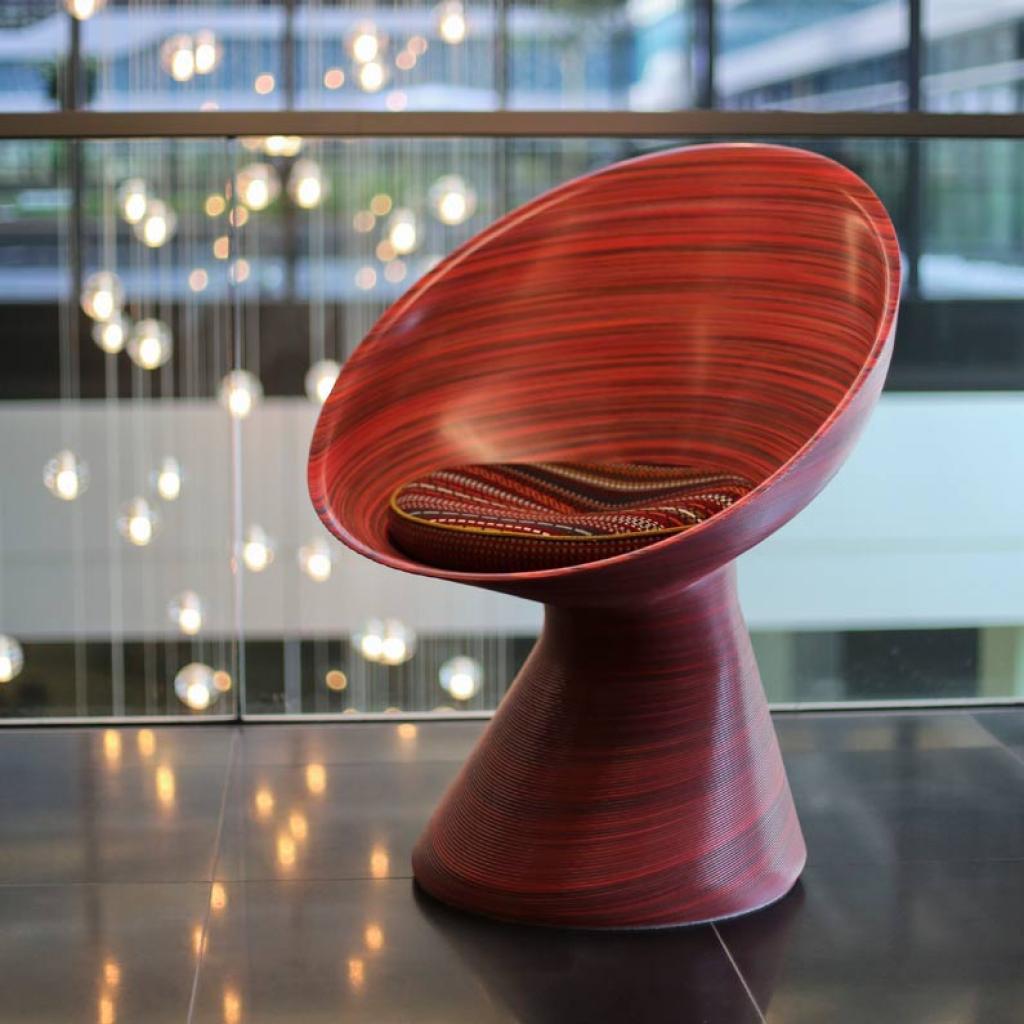
Babylon Chair
Dirk mounted an extruder on a robot arm and started producing his Endless chairs. He was the first to do so and we can see how inspirational he is from copycats like Drawn Studio, for example, who copied his work without giving Dirk credit.
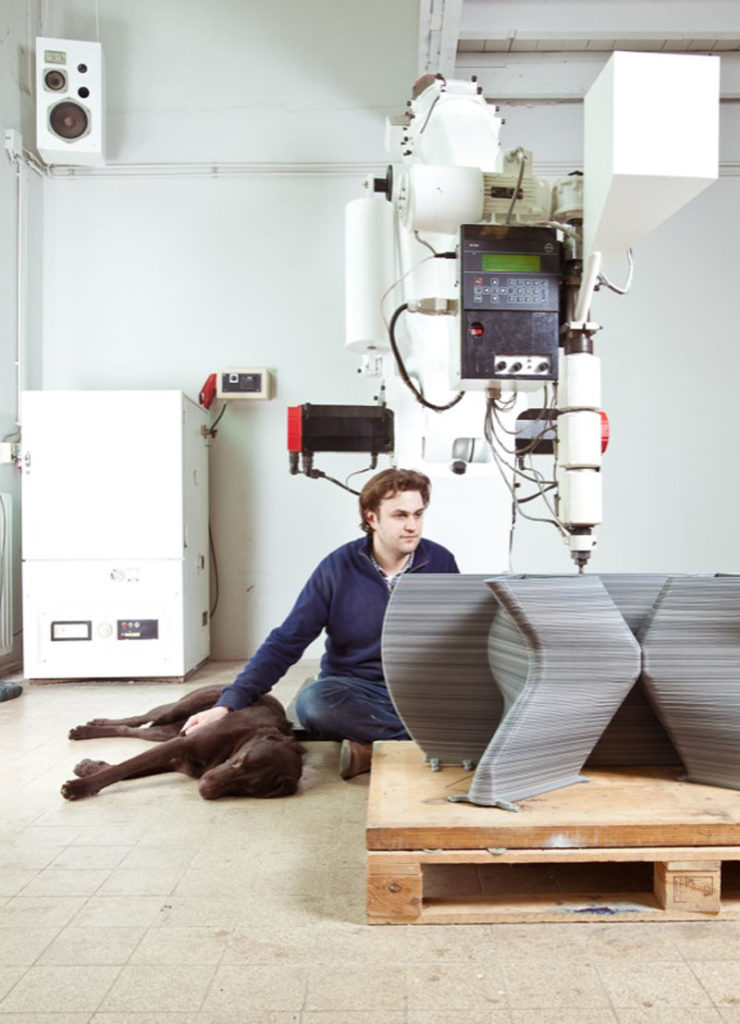
Dirk changed the economics of 3D printed furniture and made it so that many people would mount extruders onto robot arms for concrete, metal, and more. He changed the design paradigm as well in making the 3D printed layer lines a noticeable feature of the object rather than something that was to be hidden. Another breakthrough was that, by developing his own technology and manufacturing in-house, Dirk was able to make cost-effective furniture profitably.

Dirk still manufactures in-house and makes money selling usable furniture. Joris Laarman also moved from SLA toward trying to produce small parts on numerous desktop printers before coming up with a metal welder attached to a robot arm. The resulting MX3D process was spun out as a separate company. Here again, we see the use of a robotic arm with low-cost raw material to create cost-effective, profitable things.

A similar urge drove Olivier van Herpt to spend eight years of his life developing a ceramics 3D printer capable of 3D printing a meter-high vase in an hour. Trapped by the economics and confines of existing 3D printers, Olivier pioneered the development of ceramics 3D printing, porcelain 3D printing, and colored porcelain.

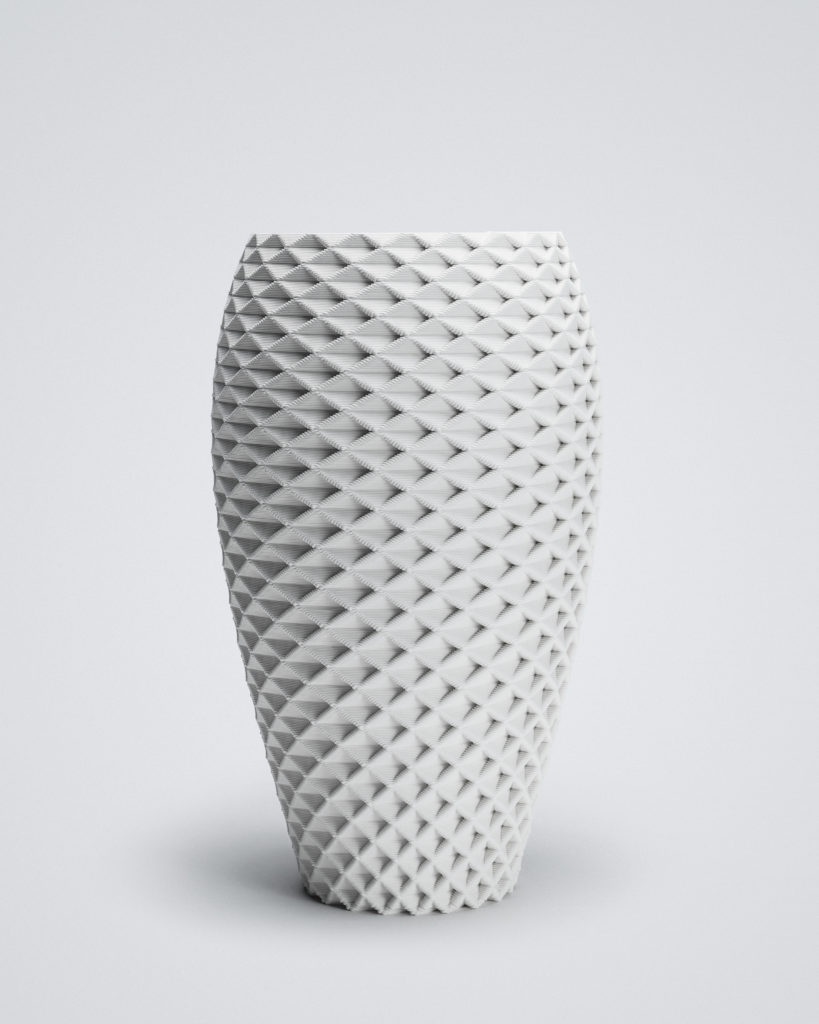
In each of these cases, we can see that the designer moved from developing products to developing a manufacturing technology. Once this technology has been developed, then the individual can fabricate unique, functional design and furniture with 3D printing.
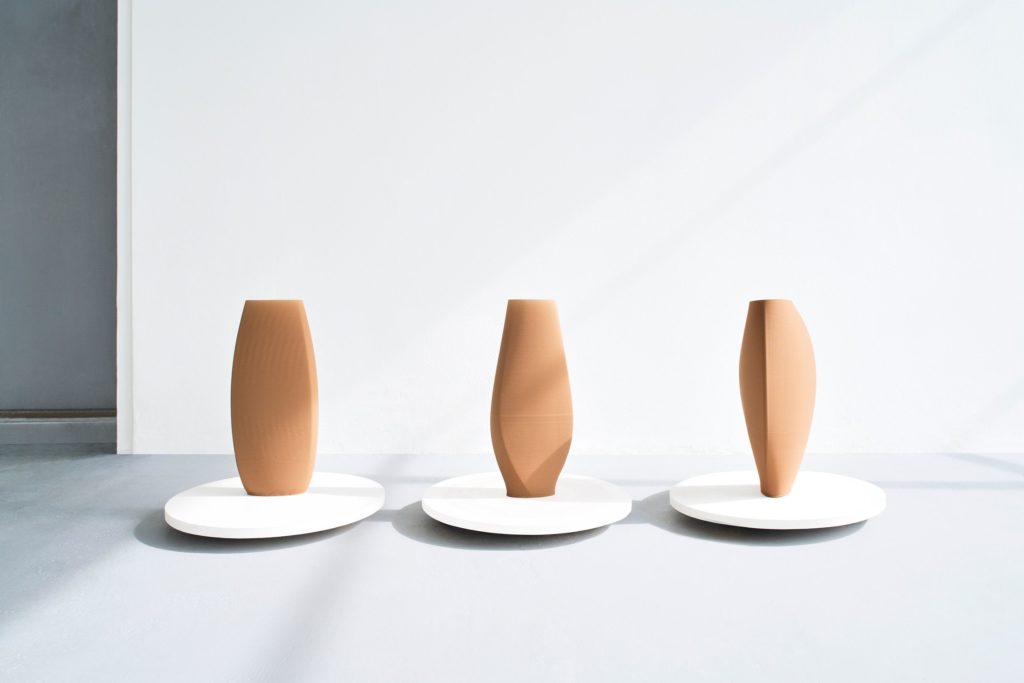
The many designers working before them operated within the confines of current stage 3D printers and were unable to develop functional items cost-effectively. These people we’e good, but, by trying to deploy their creativity within the paradigm, were only able to make what was possible.

Now, with many universities and companies interested in concrete 3D printing, and a number of businesses attempting to develop large-scale 3D printing methods, more options are available. You could now develop your own process but you could also use Cincinnati Inc’s Big Area Additive Manufacturing or St. Gobain’s concrete 3D printing.
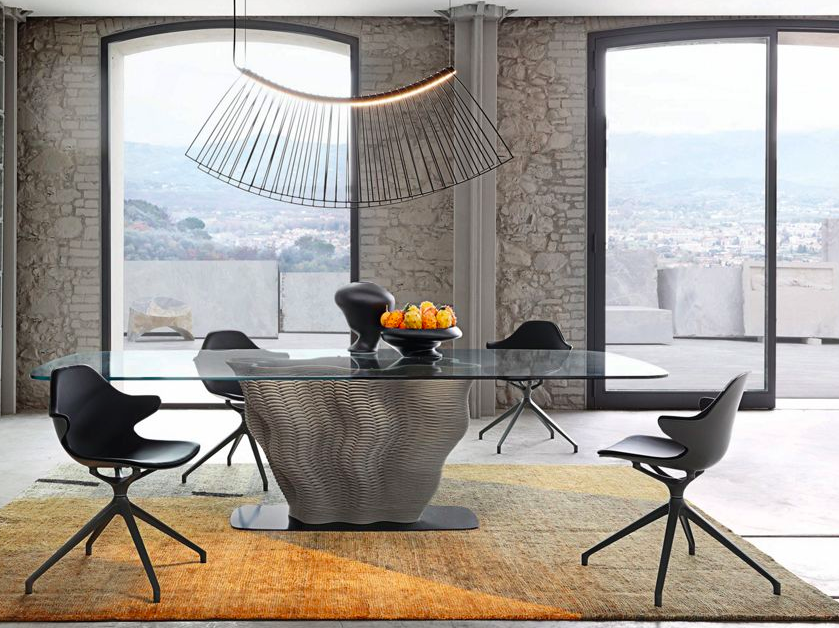
Indeed, storied French design brand Roche Bobois offers a customizable, 3D printable table. Roche Bobois fully embraced Dirk van der Kooij’s robot arm idea and aesthetic, as well as Olivier van Herpt’s designs and asthetics. This comes at a time when concrete 3D printing, ceramics 3D printing, and directed energy deposition methods, such as wire arc additive manufacturing are, for the first time, more accessible.
Now, we can 3D print human scale items relatively cost effectively. We can say that the time has finally come for people to 3D print full-scale furniture and design items. Within the current paradigm, you can now 3D print furniture that is functional and, while still expensive, comparatively affordable.
Subscribe to Our Email Newsletter
Stay up-to-date on all the latest news from the 3D printing industry and receive information and offers from third party vendors.
You May Also Like
Gorilla Sports GE’s First 3D Printed Titanium Cast
How do you help a gorilla with a broken arm? Sounds like the start of a bad joke a zookeeper might tell, but it’s an actual dilemma recently faced by...
Nylon 3D Printed Parts Made More Functional with Coatings & Colors
Parts 3D printed from polyamide (PA, Nylon) 12 using powder bed fusion (PBF) are a mainstay in the additive manufacturing (AM) industry. While post-finishing processes have improved the porosity of...
$25M to Back Sintavia’s Largest Expansion of Metal 3D Printing Capacity Since 2019
Sintavia, the digital manufacturing company specializing in mission-critical parts for strategic sectors, announced a $25 million investment to increase its production capacity, the largest expansion to its operations since 2019....
Velo3D Initiates Public Offering in a Bid to Strengthen Financial Foundations and Drive Future Growth
Velo3D (NYSE: VLD) has been among a number of publicly traded 3D printing firms that have attempted to weather the current macroeconomic climate. After posting a challenging financial report for 2023,...































